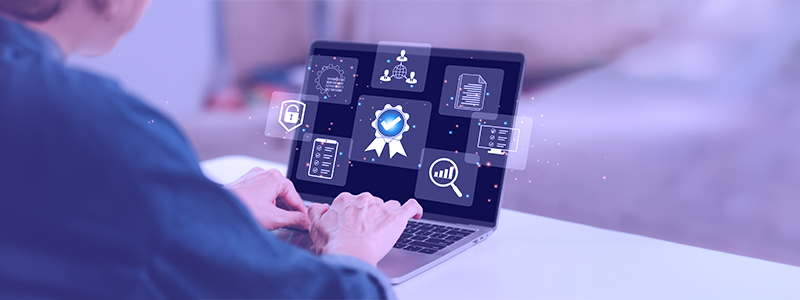Retrieval-augmented generation (RAG) is gaining traction, and for good reason. As businesses and AI experts search for more intelligent ways to process information, RAG combines the best of both worlds, i.e., the vast knowledge of retrieval systems and the creative power of generation models. But what exactly is RAG, and why is everyone talking about it?
What is RAG?
RAG is an advanced AI framework that improves the performance of large language models (LLMs) by providing access to external knowledge sources. Before generating a response, the LLM retrieves relevant information from various sources, ensuring it uses the most accurate and up-to-date data. As a result, RAG enables LLMs to provide precise and contextually appropriate responses, making them more useful in various applications.
The Evolution of RAG
The story of RAG begins in 2020 when a team from Facebook AI Research (now Meta AI), along with co-authors from University College London and New York University, set out to improve LLMs by embedding more knowledge directly into their design. To track their progress, they created a benchmark to ensure their innovations were effective. Their strategy was to develop a system that integrated a retrieval index within the model, allowing it to pull in information from various sources and generate a wide range of text outputs on demand.
This vision led to the creation of RAG, a flexible method that can be applied to nearly any LLM, seamlessly linking it to a wealth of external resources. RAG has had a significant impact on AI, blending knowledge retrieval and generation to open exciting new possibilities.
A RAG-ing Success

While LLMs are incredibly powerful, even the best models have their limits. That’s where RAG steps in, making LLMs smarter, more accurate, and able to deliver better results. Here’s how RAG improves LLM performance
- Always Gives Up-to-Date Information: LLMs can get stuck in the past because they’re trained on data from a specific point in time. RAG fixes this by allowing the model to tap into live data from external sources, ensuring that responses are current and relevant.
- Speaks the Language of Every Industry: LLMs often lack the specialized knowledge needed for industries like healthcare, finance, or legal services. RAG solves this by connecting the model to specific knowledge bases or databases, enabling it to retrieve and deliver domain-specific information.
- Keeps Data Real: LLMs often “hallucinate” by generating made-up facts when they lack enough information. RAG helps the model avoid this by pulling in accurate, verified data from trusted sources.
- Strengthens User Trust: RAG delivers accurate and credible responses, which results in greater trust among users. When individuals see that the AI regularly provides reliable information backed by authoritative sources, they are more likely to depend on it for important decisions.
- Provides Deeper Contextual Understanding: RAG boosts the model’s ability to understand the context of a query. Through vector databases, it can identify related concepts and not just match keywords, providing more insightful and relevant answers that align with the true intent of the user’s question.
- Offers Tailored Knowledge Delivery: RAG offers developers the flexibility to integrate various external knowledge bases, allowing them to tailor the AI’s capabilities to specific needs. Organizations can connect the model to proprietary databases or domain-specific resources, enabling it to deliver specialized knowledge.
- Ensures Cost-Effectiveness: With RAG, there’s no need to continuously retrain the entire LLM when new information becomes available. Instead, the model can retrieve relevant data in real time, making it a more resource-efficient approach.
What Happens When You Ask RAG a Question?
Retrieval-Augmented Generation (RAG) works through three main components. Let’s break this down using an example where a user asks, “What are the latest trends in renewable energy?”
1. Retrieval Engine: First, the Retrieval Engine searches for relevant information based on the user’s query. This engine has two parts:
- Input Query Processor: When the user submits the question, this component analyzes and refines the input. It ensures a clear understanding of the query, recognizing that the user seeks recent trends rather than general knowledge.
- Search Engine: Once the input is refined, the Search Engine scans through a vast collection of indexed data—like articles, reports, and studies—related to renewable energy. It retrieves and ranks the most relevant content based on the user’s request.
2. Augmentation Engine: After gathering the top results, the Augmentation Engine takes over. It enhances the prompt given to the LLM by incorporating the most relevant information retrieved. For example, if the top results highlight solar energy advancements and wind power innovations, this information is included to provide context for generating a response.
3. Generation Engine: Finally, the Generation Engine uses the enriched prompt to create a cohesive and informative answer. In our example, the model might respond, “The latest trends in renewable energy highlight substantial improvements in solar panel efficiency and groundbreaking wind turbine designs, making these technologies more accessible and effective.”
RAG vs. Semantic Search
RAG and semantic search are both techniques used to improve how AI handles information, but they work in different ways. RAG combines real-time data retrieval with an LLM to generate new responses based on fresh information. On the other hand, semantic search focuses on understanding the meaning behind a query to find the most relevant existing content. Instead of creating new answers, it searches for documents or passages that best match the intent of the query. It goes beyond basic keyword matching by using advanced techniques like word embeddings to find content that aligns with the context of the question.
For example, if you search for “impact of global warming,” semantic search will also look for related terms like “climate change effects” to give you a broader range of results.
Five Practical Applications of RAG
RAG’s ability to combine real-time data retrieval with content generation makes it highly versatile. Here are five of its practical applications:
- Customer Support Automation: RAG can improve customer service by retrieving relevant product information, support documents, and FAQs to generate accurate, helpful responses to customer queries. This helps companies provide faster and more personalized customer support.
- Document Processing: RAG can streamline document processing by extracting and analyzing information from various documents. It automatically retrieves data from contracts, invoices, and reports, improving operational efficiency and reducing manual errors.
- Education & E-Learning: In educational platforms, RAG can pull information from textbooks, academic papers, or online resources to provide students with detailed answers to questions or even generate personalized study guides based on the latest research.
- Healthcare Information Systems: RAG can help healthcare professionals access the latest medical research, patient data, or treatment guidelines, allowing them to offer accurate diagnoses and up-to-date treatments. It can retrieve information on rare diseases, emerging therapies, or clinical trials.
- Content Creation: For content marketers, RAG can gather up-to-date statistics, industry reports, or relevant articles and use this data to create blog posts, reports, or marketing materials. This real-time content generation allows for more accurate, research-backed content without manually searching for resources.
The Future of RAG
As technology advances, RAG is expected to integrate more sophisticated algorithms and access a wider variety of data sources, making it even more effective at providing accurate and contextually relevant answers. This evolution could lead to more personalized user experiences, adapting responses to fit individual preferences and needs in various fields like healthcare, finance, and customer service.
RAG will likely enhance real-time decision-making capabilities, empowering organizations to manage knowledge dynamically and efficiently. The next steps for RAG involve fine-tuning its processes, broadening its applicability across various fields, and collaborating with emerging technologies to further empower users in their quest for information.
Astera offers a unified platform for organizations to develop and deploy their own RAG systems quickly and efficiently, all while keeping data secure within their environment.
Ready to experience the benefits of RAG for yourself? Contact us today and learn how to optimize your data processes.
Authors:
 Mariam Anwar
Mariam Anwar
 Apr 29th | 11 AM PT
Apr 29th | 11 AM PT
